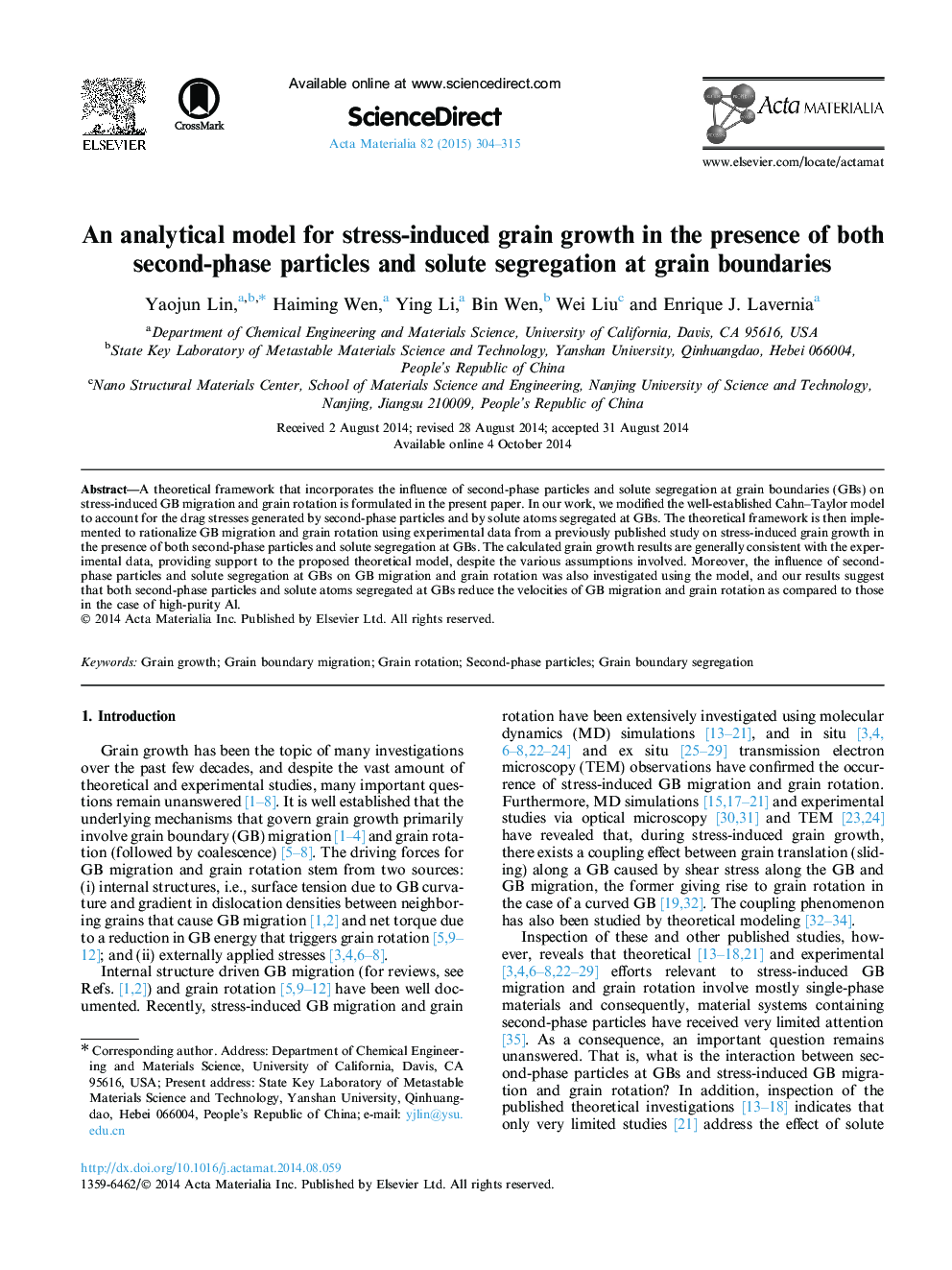| Article ID | Journal | Published Year | Pages | File Type |
|---|---|---|---|---|
| 1445525 | Acta Materialia | 2015 | 12 Pages |
A theoretical framework that incorporates the influence of second-phase particles and solute segregation at grain boundaries (GBs) on stress-induced GB migration and grain rotation is formulated in the present paper. In our work, we modified the well-established Cahn–Taylor model to account for the drag stresses generated by second-phase particles and by solute atoms segregated at GBs. The theoretical framework is then implemented to rationalize GB migration and grain rotation using experimental data from a previously published study on stress-induced grain growth in the presence of both second-phase particles and solute segregation at GBs. The calculated grain growth results are generally consistent with the experimental data, providing support to the proposed theoretical model, despite the various assumptions involved. Moreover, the influence of second-phase particles and solute segregation at GBs on GB migration and grain rotation was also investigated using the model, and our results suggest that both second-phase particles and solute atoms segregated at GBs reduce the velocities of GB migration and grain rotation as compared to those in the case of high-purity Al.
